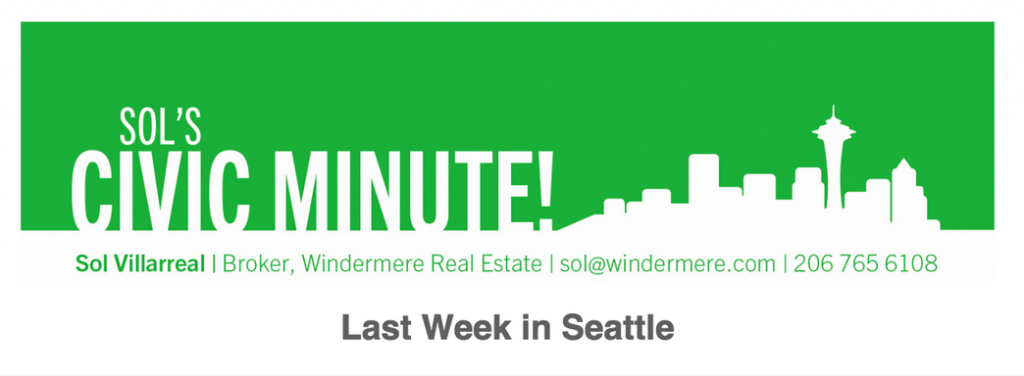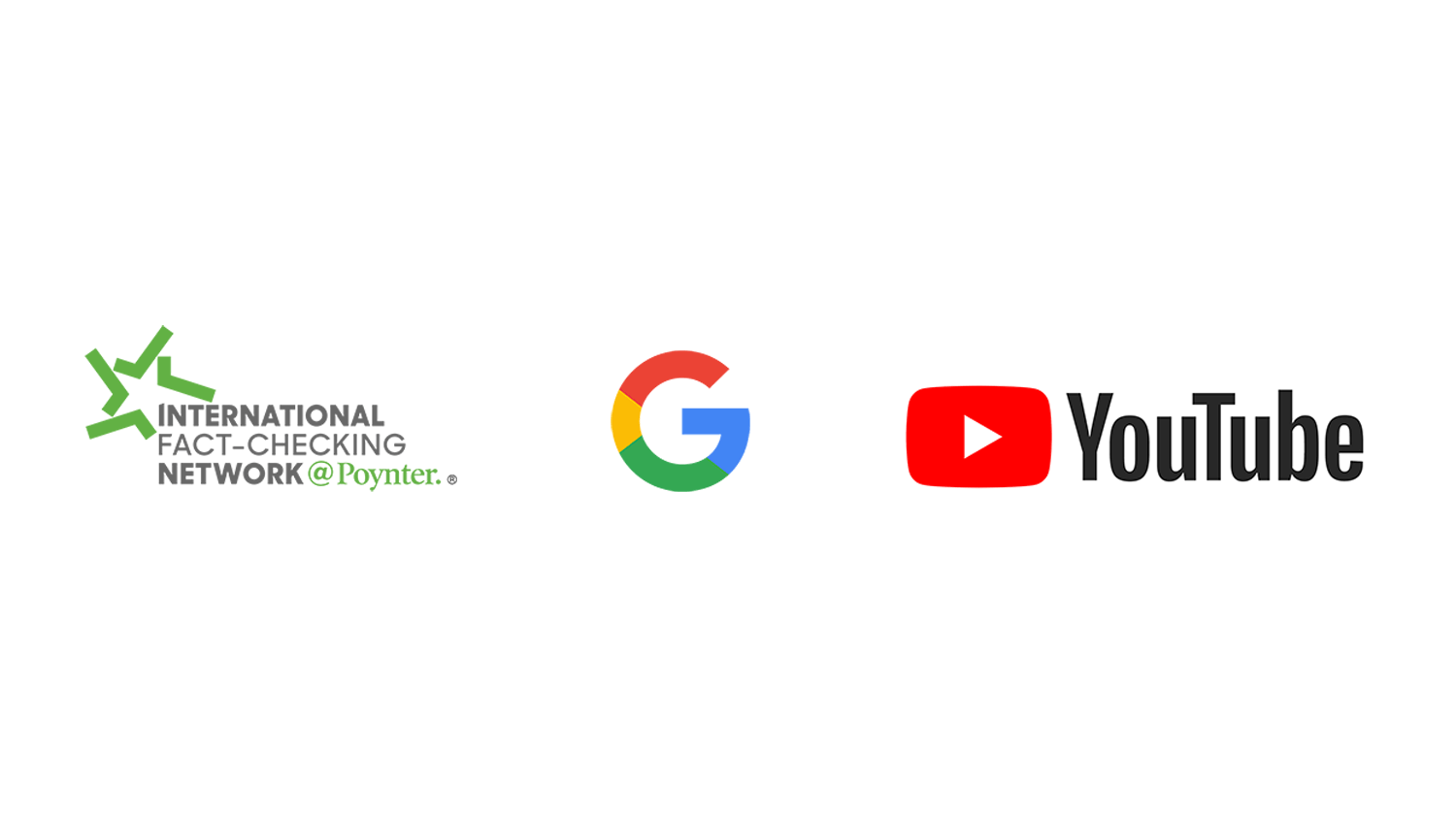Like many of you, I get a lot of newsletters about the news. I like to see what news organizations find important, how they write about those events and when they publish them. Do they try to get them out first thing in the morning, when people scan their email? Do they prefer afternoon, during a lull at work? How about after dinner, when people are winding down? Do they a/b test their catchy subject lines and animated gifs? How many links do they include?
I look at all of this stuff. It’s interesting, but not as interesting, perhaps, as the newsletter that I would argue is the best news newsletter that exists — which wasn’t created by anyone working in the news business, and which you wouldn’t know about if you live outside of Seattle.
Meet Sol’s Civic Minute. It’s a weekly newsletter that covers everything important going on in the city of Seattle. But it’s not written by a journalist or a news organization — the author is a local real estate agent in Seattle named Sol Villarreal. As he states, “You can scan the entire thing in under a minute to catch up on what happened in Seattle the previous week…. My focus is on local politics & government and other related items–the kinds of things that we all want to pay more attention to but that it’s tough to take the time to stay up to date on. I spend hours each week reading all the local news I can find so that you don’t have to!”
I don’t live in Seattle. I’ve never been to Seattle. I found out about Sol’s Civic Minute through my friend Nikki, who does live in Seattle — and who raved about the newsletter. It’s the only one she reads cover to cover, she said, and it makes her a more informed citizen.
So I started reading Sol’s Civic Minute — and it’s really, really good. Sol worked for Seattle’s previous mayor. When that administration ended, Sol decided to sell real estate and needed to figure out a way to advertise. Instead of going the traditional route, he decided to write a weekly newsletter about the week’s news. Word spread, and Sol began to get clients through his newsletter.
But here’s the thing: Sol writes the newsletter that every local news organization could and should be writing. (Here’s an example.) He’s well-informed, he’s clearly read a ton of sources, and he’s concise. He tells you exactly what you need to know to be a well-informed citizen of Seattle.
Every town has a Sol. Every news organization, for that matter, has at least one Sol — someone who deeply cares about local, and wants to help keep people informed. But how do you actually craft a newsletter from that?
Here’s what I learned about how Sol did it.
MK: Your newsletter does exactly what it says on the label: it fills me in, on everything I need to know about what’s going on about local Seattle government. How’d you come up with such a good idea?
SV: Glad you like it! I’d been looking for an excuse to put together some sort of curated local news digest for awhile — I believe that local government is stronger when more people participate in it, and that one of the biggest barriers to that participation is just a lack of information about what’s happening in our city. My theory is that most of us want to know what’s going on, but we don’t have the time to actually keep track of it all.
I spent a huge amount of time when I was working for the previous mayor of Seattle reading local news and tracking issues. After the administration ended I really wanted to unplug and just read one email digest that would catch me up on everything I needed to know about the local political world, but there was no such newsletter.
When I started selling real estate I realized very quickly that I was going to need to have some way to keep my name in front of people on an ongoing basis. I really dislike most marketing emails I get, so I vowed that I was going to write one that I would actually look forward to receiving myself, and ideally one that was only tangentially related to real estate (since most people don’t really care what interest rates did last week or about the minutiae of market statistics). Once the idea occurred to me to combine the two in the form of the Civic Minute, there was no going back; it has just enough real estate news each week to justify the fact that it’s a real estate newsletter, but the main focus is on everything else.
MK: How long does it take you to write?
SV: 5-10 hours per week, counting feed scanning, article reading, curation, email writing, formatting, and proofreading.
MK: How do you keep track of the stories that you plan to write up? Do you keep track of them all week?
SV: Yeah — I save them all to Pocket over the course of the week, and then at the end of the week I sit down, categorize them, and cull them down to just the most important things that I think people a) should know about and b) may not have already heard about.
MK: Your newsletter does a much better job of informing me than many other news newsletters I’ve seen. Could you explain your background, and how you chose the format of a Civic Minute?
SV: That’s very flattering to hear—that was my goal! I worked in the previous mayor’s office for four years, and during that time I developed a highly evolved system for keeping track of the local news. I got a lot of benefit out of it, and I’d share the stories with the rest of the office that I thought everyone else should be aware of, but I always kind of wanted an excuse to do a curated local news digest for the broader public.
I chose the format for the Civic Minute by copying my favorite elements of the best newsletters I subscribe to myself and then beta testing it for a month with a group of 50 good friends who gave me a lot of great feedback. It emerged as a very different newsletter at the end of the month than it was when it started.
MK: How do you get your news?
SV: Every day I scan the following, and save the articles that are candidates for the Civic Minute into Pocket:
- The Seattle Times (via their iPad print replica app).
· 133 different RSS feeds (via Feedly) that include every neighborhood blog in the city, every blog by a city department or elected official, all of the local real estate blogs, the local TV and radio stations, and a wide variety of other local blogs, including the local civic trifecta of Crosscut, Publicola, and Slog.
· A 40-person Twitter list (via Flipboard) that’s optimized for low-frequency, high-value local content curators (i.e., those with good signal:noise ratios).
· A Facebook list (through the official iPad & iPhone apps) of the top 80 or so people from my personal life whose posts I care most about.
MK: Do you read other newsletters?
SV: I do. Given unlimited time I’d read the New York Times every morning, but I’ve fallen back on newsletters for most of my national-level news these days, simply because doing the Civic Minute takes up all of my news-gathering bandwidth. I especially love 10 Things You Need to Know Today by The Week; The Skimm; and Vox Sentences, all of which were big inspirations for me…and even though I’ve had to triage it recently, I’m a huge fan of Media REDEF, too. Reading it every morning when I discovered it four years ago was what made me want to curate my own email newsletter some day.
MK: You’re a real estate agent. Have you gotten clients through the newsletter?
SV: Absolutely! At this point it’s the only marketing that I do for my real estate business, and on average I get 1-2 new client prospects per week from it. What I love about the format is that it gives people something they actually want while also reminding them in an unobtrusive way that I sell real estate, so I’ll be top of mind when they’re ready to buy or someone they know asks them for a referral. My weekly open rate is just shy of 40% on a list of a little over 1,500 people, and more often than not when I see someone who gets the Minute they tell me how much they look forward to each week’s edition on Sunday morning.
MK: Do you know of anyone else producing a similar newsletter in other cities?
SV: I don’t—I’m sure there are other people doing it, though.
MK: What would you recommend to someone who wanted to start something like this for their town?
SV: Just do it! If you have to choose just one technology, go with RSS, hands down. Create a Feedly account, go out and find all of the scattered sources of information about what’s happening in your city, and categorize them in a way that makes sense for you and lets you scan everything quickly and easily once per day. Save the articles you want to put in your newsletter into Pocket or Instapaper or one of the other read-it-later services, and then put some actual time into summarizing the articles in a way that saves your readers time but also makes it easy for them to read more if they want to. And use MailChimp — it’s a great tool, and it’s free to send emails to up to 2,000 subscribers. Email me at sol@windermere.com and I’ll happily tell you whatever you want to know.
MK: Do you think the newsletter is as effective for national and international news as it is for local?
SV: I don’t. Local news is relatively finite; there’s a lot that happens anywhere in a given week, but I feel like each week’s Civic Minute is able to capture almost all of the big civic stories that an informed Seattleite should know about while also going somewhat in-depth into the bigger ones. At the national and international level there’s just too much going on to be able to filter it down effectively into one comprehensive newsletter. There are some great national and international newsletters out there, but they’re either extremely specific (Politico’s Playbook) or so broad in scope that they’re really just picking and choosing from the major stories of the day (10 Things You Need to Know Today, The Skimm, Vox Sentences). There’s nothing wrong with that—like I said, it’s how I get most of my national and international news these days—but it’ not really possible to hit the sweet spot of going into some depth but also maintaining a reasonable breadth of coverage at the same time.
I also like that at the local level one person working very part-time at it can put together a close-to-comprehensive look at everything you need to know about what happened over the course of the previous week. I can’t even comprehend trying to do something similar at the national or international level as one unsupported individual, at least not without making a full-time job out of it.








Comments